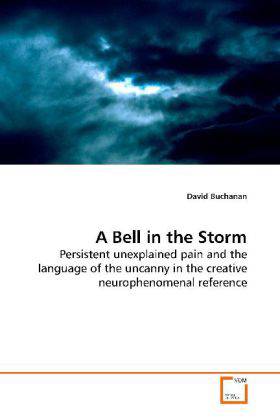
- Afhalen na 1 uur in een winkel met voorraad
- Gratis thuislevering in België vanaf € 30
- Ruim aanbod met 7 miljoen producten
- Afhalen na 1 uur in een winkel met voorraad
- Gratis thuislevering in België vanaf € 30
- Ruim aanbod met 7 miljoen producten
Zoeken
A Bell in the Storm - Persistent unexplained pain and the language of the uncanny in the creative neurophenomenal reference
Persistent unexplained pain and the language of the uncanny in the creative neurophenomenal reference
David Buchanan
Paperback | Engels
€ 77,95
+ 155 punten
Omschrijving
A Bell in the Storm begins with the experience of persistent pain in an attempt to prove his pain is real to his doctor, the author engages the theory of pain from Descartes to the most recent revelations of our neuroplastic brain. Rather than pain being referenced from a predictable machine-like body that is haunted by the mystery of the mind, it is engendered through the staggering complexity and self-referential unpredictability of the neuroplastic brain. This begs questions of medicine, theory and philosophy to ask better questions of our experiences of pain and the affirmation of what possessing a neuroplastic brain means for our very changeable beings. While we are more fragile than we thought we are also much more miraculous. Our seeming inability to uncover the secrets of pain is far from a loss but an outstanding opportunity for an affirmation of the inseparability of our ever-changing brains with our second to second existence. It is in better understanding this inseparability that affords us creative moments that can free us from universal views that disparage the sufferer to intimate glimpses and affirmations of their lives
Specificaties
Betrokkenen
- Auteur(s):
- Uitgeverij:
Inhoud
- Aantal bladzijden:
- 296
- Taal:
- Engels
Eigenschappen
- Productcode (EAN):
- 9783639106220
- Verschijningsdatum:
- 23/12/2008
- Uitvoering:
- Paperback
- Formaat:
- Trade paperback (VS)
- Afmetingen:
- 152 mm x 229 mm
- Gewicht:
- 399 g

Alleen bij Standaard Boekhandel
+ 155 punten op je klantenkaart van Standaard Boekhandel
Beoordelingen
We publiceren alleen reviews die voldoen aan de voorwaarden voor reviews. Bekijk onze voorwaarden voor reviews.











